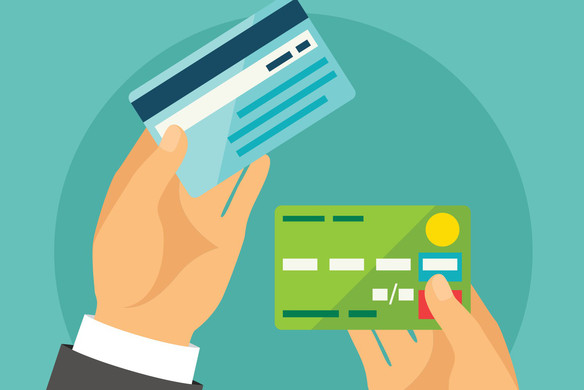Table of contents
The fast-paced financial world of plastic credit cards and their interest rates is relatively new in the grander, larger history of the U.S. Only since the late 1950s have Americans started to use credit, and the craze has resulted in a multimillion-dollar, powerful industry that affects millions of Americans every year. Both merchants and consumers would be completely stuck without the little plastic cards, with slowed transactions and virtually no online purchases. When did we really start using credit cards, and when did this change in monetary systems really start to affect not only our economy but the global economy?
The First “Credit Cards”: Tally Sticks
It’s very difficult to say when the first credit card existed, as credit exchanges as a concept were around as early as the Middle Ages. They were called tally sticks and were a system of financial record-keeping used when currency, which was heavy, expensive coinage, was not available. These sticks featured notches for the amount of debt owed and were split neatly down the middle, making them very difficult to counterfeit as each one’s grain and split was completely unique. Tally sticks were an essential part of tax collection in England for more than 700 years.
The Forgotten Wallet and the Diners’ Club Credit Card
The first credit card as we understand it in the modern sense was created as late as 1950. It was called the Diners’ Club card. A man named Frank McNamara came up with the idea in 1949 while having dinner in a New York City restaurant. He was caught without his wallet. Urban legend has it that he offered to sign for his dinner, promising to pay for it later, then called his wife to bring over the cash. It is a fact, though, that he created the first consumer-facing credit card company, called Diners’ Club.
- One of the Earliest Cards: The Diners’ Club Credit Card
- The Credit Card Was Invented By a Man Who Forgot His Wallet at Dinner
- It All Began With a Forgotten Wallet …
- The History of the Credit Card
The Move to Plastic
While most merchants weren’t happy with these cards initially, the credit card started a craze that began to take shape in the 1950s and early 1960s. The Diners’ Club card was technically a charge card; it required members to pay in full each month. It had been historically made from either cardboard or celluloid. American Express issued the first plastic card in 1959. As a competitor to Diners’ Club, the company did very well. Plastic soon became a mainstay. Also in 1959, a new concept was introduced: the concept of the rolling balance, which was revolutionized by MasterCard. Cardholders didn’t have to pay in full each month, but allowing rollover would increase fees.
- One of the First Plastic Credit Cards
- The History of the World: Credit Cards
- From Paper to Plastic: A Truly Limited-Edition Credit Card
The Development of Money, Metrics, and Convenient Billing
While credit cards started to become common, not everyone could have one in the 1960s. Credit cards began to really take off later on, starting in Sioux Falls, South Dakota, when conventional loans became too highly regulated. In the 1980s, Citibank moved to South Dakota because of its looser laws in combination with what became known as the Marquette decision, which freed up regulations on how much banks could charge their cardholders in interest. This deregulation allowed more people to get credit cards, and the industry expanded a great deal (for better and for worse).
- Over a Thousand Miles From Wall Street
- When Were Credit Cards Invented? A Complete History
- The History of Credit Cards
- Credit Cards: Use and Consumer Attitudes, 1970-2000
- Women and Credit Cards
Future Advancements and the “Smart Card”
While the technology for the so-called “smart card,” which has an embedded chip, was developed as early as the mid-1970s, it’s only now starting to become mainstream. This technology became widespread in Europe in the form of payphone cards as early as the 1980s. The EMV® system — developed and managed by American Express, Discover, JCB, Mastercard, UnionPay, and Visa — has started to be included in cards as of October 1, 2015. This is considered to be a more secure method of transaction, as these cards are more difficult to counterfeit.
- The “Smart Card” Is Born
- An Introduction to “Smart Cards”
- An Overview of Recent Developments in the Credit Card Industry
- What Are “Smart Cards,” and Why Are They Coming to America?
![]()











